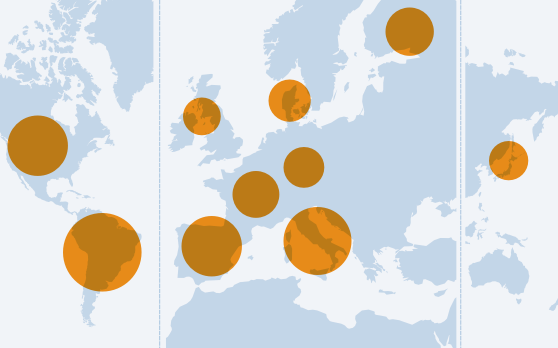Overview
This year's report reveals new insights about digital news consumption based on a YouGov survey of over 70,000 online news consumers in 36 countries including the US and UK.
The report focuses on the issues of trust in the era of fake news, changing business models and the role of platforms.
Key findings
Video
Social media
More than half of all online users across the 36 countries (54%) say they use social media as a source of news each week but this ranges from 76% in Chile to 29% in Japan and Germany.
More than one in ten (14%) now say social media is their main source
Fake news
Only a quarter (24%) of survey respondents think social media does a good job in separating fact from fiction, compared to 40% for the news media.
In countries like the US (20%/38%), and the UK (18%/41%), people are twice as likely to have faith in the news media
Ad blocking
Ad blocking has stopped growing and is still largely confined to desktop. Across all countries 24% use them regularly, 7% on mobile.
Almost half (43%) of those had agreed to temporarily turn off their ad-blocker for particular news sites in the last year.
Paying for news
There has been a surge in the numbers prepared to pay for online news in the United States, growing from 9% to 16% along with a tripling of news donations.
Most of the new payments have come from the young (u35s) and those on the political left with almost a third saying they want to ‘help fund journalism’
Interactive
 Explore the data behind the report
Explore the data behind the report
Explore the 2017 data and build your own charts. Compare dimensions and data types between or within countries,
About us
The Reuters Institute Digital News Report aims to deliver useful and timely data about the transition to digital. Read more about our annual survey ...
Resources
You can view or download a Powerpoint presentation of all of the charts and tables in the 2017 report.
 Explore the data behind the report
Explore the data behind the report












Comment & analysis
Vox publisher Melissa Bell reflects on the crisis of trust in the news industry and sets out a manifesto for a brighter future
Antonis Kalogeropoulos looks at how many people follow politicians in social media across six countries and asks what the motivations are for following politicians directly in this way